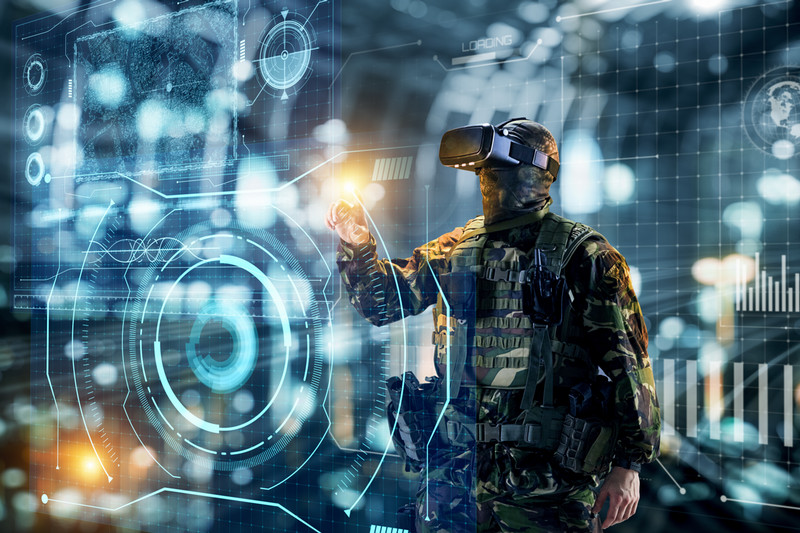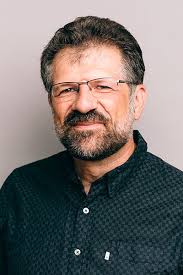Strategic Defense Technologies

Purdue University’s Strategic Defense Technologies certificate program is an interdisciplinary professional development opportunity for anyone whose work requires knowledge and competencies needed to analyze, understand, design, and execute defense and civilian strategies that involve technologies supporting the strategic interests of the United States. The program is designed for midcareer military and civilian personnel in the Department of Defense ecosystem, employees of DoD contractors and staff members for policymakers, think tanks and other nongovernmental organizations. Courses in the program include Grand Challenges in Defense Engineering; Space Strategy; Strategic Defense Foresight and Leadership; Technology, War and Strategy; and Data and AI Storytelling. To earn a certificate from Purdue learners must complete the Technology, War and Strategy course and two of the other four courses, but all the courses can be taken individually outside of the certificate program.
Why Earn the Full Certificate?
Purdue University is one of the country’s leading educational institutions for defense-related research and teaching. The Strategic Defense Technologies certificate program was developed by internationally known Purdue faculty and subject matter experts who update the material regularly to factor in rapid technology changes. The program is 100% online, self-paced and requires no prerequisites. Created by expert Purdue instructional designers, the courses are structured to move learners smoothly through the curriculum as they gain knowledge and skills to advance their careers.
Courses
This course examines challenges in energy, logistics and information processing, and rapid offensive and defensive systems in the context of the past, the present and the future to develop new conceptual insights, research priorities, system integration, and timely methods to meet emerging national defense engineering needs. The curriculum considers such topics as the Manhattan Project, the development of containerized shipping, artificial intelligence, hypersonics, rail gun technology and more. Each module covers different topics while prompting students to examine creative solutions inspired by the past and use the lessons learned to stimulate thinking needed for solving future challenges.
Learning Objectives
- Develop professional methods to identify, research, collaborate, and develop solutions to engineering challenges while maintaining appropriate systematic thinking.
- Formulate and solve structured problems using standardized professional methods including case study research, system engineering design, and policy analysis.
- Appraise historic, present, and anticipated future engineering challenges by identifying the necessary parameters required for solving them, such as specifying challenge dimensions, generating appropriate assumptions for missing information, formulating solutions, and projecting possible results.
- Identify, locate, and integrate data, parameters, or information about past, present and future practices needed to develop solutions to course problems.
- Assemble and compose written and oral communications involving solutions and arguments valuable for both senior and technical leadership while maintaining ethical and professional conduct.
This course analyzes the origins, tensions and promises embedded in the space-focused strategies. The course material discusses these issues from the national and strategic interests perspective, focusing on how competition and conflict in space – the most recent domain in which nations and great powers dispute political, military, economic, and legal interests – could and should be handled. That question is examined in the context of grand strategy, defined as the harnessing of military, economic and political power over decades and centuries to advance the nation. Space is the ultimate high ground, and if the United States wants to continue in its preeminent position, it must dominate that high ground.
Learning Objectives:
- Distinguish the key characteristics of grand strategy with examples for each great power involved in space strategy.
- Distinguish the main phases in the history of space exploration and appraise their role in revealing various strategic priorities for space policy.
- Differentiate essential provisions of the key space legal documents and principles by their domain and effect.
- Assess the main space-paced conflictual relationships and prioritize them by importance and immediacy.
- Differentiate the role of governments and private organizations in space strategic control and determine their main common interests by great power.
This course provides learners with strategic foresight tools and skills to understand and make decisions regarding the future. Strategic foresight is the ability to create and sustain a variety of high-quality, long-term views and apply insights in adaptive ways. Strategic foresight produces forward-looking views, commonly referred to as scenarios, and these are used to broadly describe what a future world would look like, and how it would feel to live in that world. These scenarios form the basis for strategies and plans to help organizations remain competitive into the foreseeable future. Students in the course will use strategic foresight to create their own scenarios.
Learning Objectives
- Define horizon scanning, signals and drivers of change
- Demonstrate the 2 x 2 matrix method for generating scenarios
- Demonstrate the archetype method for generating scenarios
- Explain the strengths and weaknesses of scenarios
This course blends history with social science theory and policy concerns in a study of the theoretical underpinnings of strategy and its intersection with technology. The course examines several historical case studies in which technological innovations intersected with history-making demands. The course also analyzes contemporary issues related to technology and strategy, focusing on U.S. defense policy in the post-World War II era. The overriding idea of the course is that no technology is strategic by definition. It is its use and reinvention in continuing use that makes it strategic.
Learning Objectives
- Classify and compare the core strategic competencies needed in designing and implementing strategic defense technologies
- Analyze system-level (economic, political, military) trade-offs in choosing and developing strategic technologies.
- Explain the role of negotiations and alliances in developing strategic technologies
- Sequence and apply in strategic planning historical constants of strategic technology development
- Critique core principles for using technological strategies in defense contexts
- Describe how technology acts as a means to an end, and evolves over time
- Demonstrate multiple perspectives on competing worldviews
- Assess the concept of strategic technological offset in context
- Analytically present the offset concept
- Demonstrate the utility of the concept in a historical context
- Integrate the offset concept in analytic work
- Devise effective communication and presentation skills
- Hypothesize and assemble time-critical decision-making propositions.
- Formulate executive writing and presentation skills
This course centers around understanding and communicating data in a way that informs, compels, or reassures – a core personal and professional skill for anyone who wants to be a successful member of the 21st century community. Telling effective data stories combines elements of rhetoric, data science, visualization, and storytelling, with artificial intelligence now becoming a prominent tool in the process. The course is subdivided into six modules, the first covering basics of storytelling with the following five modules diving deeper into each step of building a data story that surprises, provides a new, more convincing explanation for or alternative to time-worn ideas, and proposes a course of action. The goal of the class is to train learners in making memorable, teachable, data-driven arguments in the form of stories.
Learning outcomes:
- Provide examples and justify all core techniques in storytelling, including challenging prior assumptions, providing alternative explanations, balancing timing versus immediacy, and transforming each story into a teachable moment.
- Data and AI Storytelling 101 is an introduction course that is required prior to taking the remaining three courses. Students do not individually register for the Data and AI Storytelling course but must register for one or all of the remaining three courses. Once registered for any other course, the student will also receive notification for access to Data and AI Storytelling 101.
Register for individual courses
Register for certificate
Registration for full certificate (3 courses): $2,400
About the Instructor
 Dr. Sorin Adam Matei is Associate Dean of Research and Graduate Education in the College of Liberal Arts and Professor of Communication in the Brian Lamb School of Communication. His research studies the relationship between information technology, group behavior, and social structures with applicability to military science. He is known for spearheading innovative research projects on data science in military operational research, human-machine-human collaboration and interaction, and ethics in big data and AI. He has been awarded numerous grants and has published nine books and dozens of journal articles in publications like The Journal of Communication and Communication Research.
Dr. Sorin Adam Matei is Associate Dean of Research and Graduate Education in the College of Liberal Arts and Professor of Communication in the Brian Lamb School of Communication. His research studies the relationship between information technology, group behavior, and social structures with applicability to military science. He is known for spearheading innovative research projects on data science in military operational research, human-machine-human collaboration and interaction, and ethics in big data and AI. He has been awarded numerous grants and has published nine books and dozens of journal articles in publications like The Journal of Communication and Communication Research.